This post may contain affiliate links. Please read our disclosure policy.
This single serving Lo Mein recipe features tender noodles tossed with crisp vegetables and a rich, savory sauce and can be ready in 15 minutes! It’s a flavorful dish that brings the comfort of takeout right to your kitchen – perfectly portioned for one
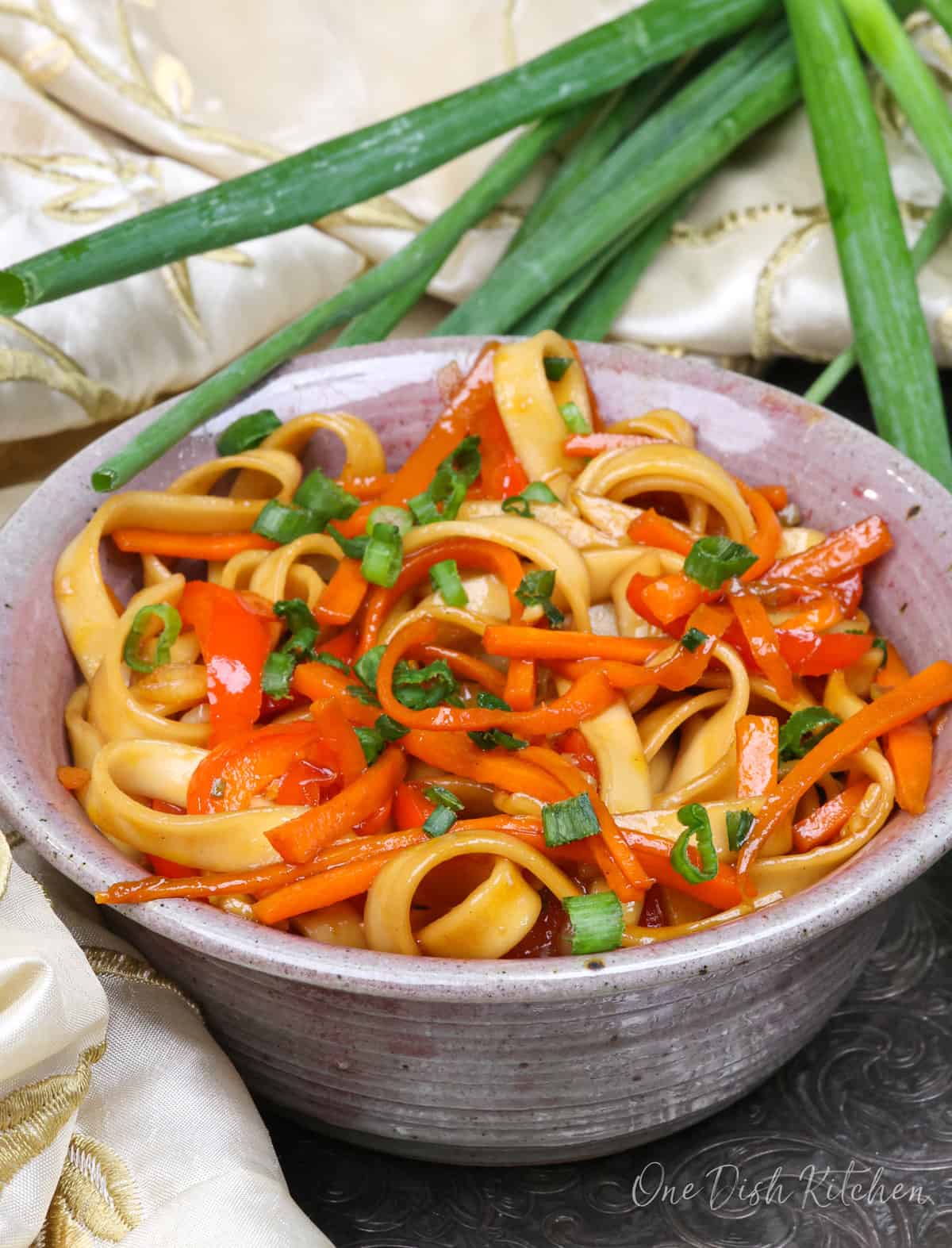
Why You’ll Love This Recipe
- Quick and Easy: Simple steps and fast cooking time make this a great meal for busy days.
- Add Your Favorite Protein: Easily include cooked chicken, shrimp, beef, or tofu.
- Flavorful: Made with a rich, savory sauce that brings authentic lo mein taste to your kitchen.
- Perfectly Portioned: Made for one, but doubles easily if you’re cooking for two.
I absolutely love this lo mein recipe and make it often when I want something quick, flavorful, and satisfying. It’s inspired by the classic Chinese dish made with soft noodles, fresh vegetables, and a bold, savory sauce. The ingredients are simple, but the flavors are rich and comforting—just the way lo mein should be. This version is perfectly portioned, easy to throw together, and always hits the spot.
Try more of our single serving Asian-inspired dishes like our stir fry pepper steak, single serving beef and broccoli, Mongolian beef for one, easy shrimp fried rice, and quick and easy kung pao chicken. Each one is packed with bold flavor and easy to make.

Ingredients
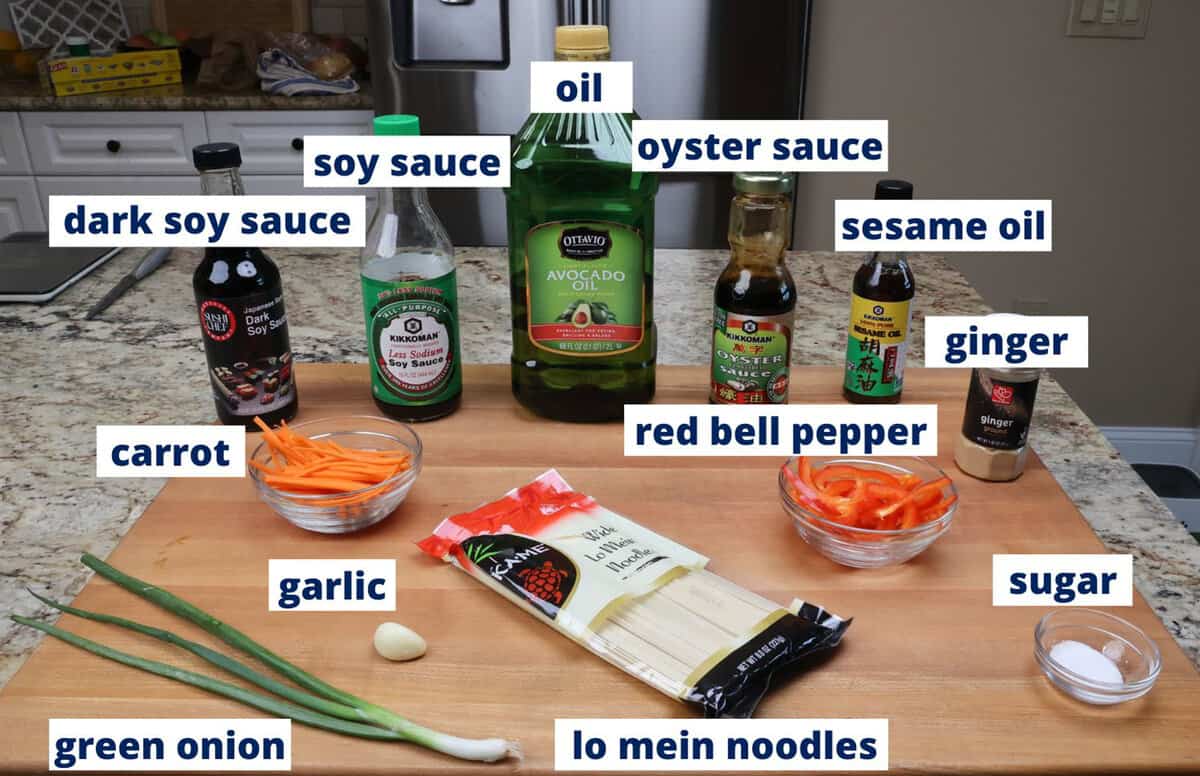
If you have any ingredients leftover from this 15-minute lo mein recipe, check out our Leftover Ingredients Recipe Finder.
- Dark Soy Sauce: Adds a rich, caramelized flavor and deep color. It’s thicker, darker, and slightly sweeter than regular soy sauce. We use both dark and light soy sauce in this recipe for balance. If you don’t have dark soy sauce, use more low-sodium soy sauce, but note the sauce will be saltier and less flavorful.
- Low-Sodium Soy Sauce: Helps control the saltiness while still adding flavor. Regular soy sauce can be used if preferred.
- Oyster Sauce: Adds depth and umami. Hoisin sauce is a vegetarian alternative. Use leftover oyster sauce in stir fry beef and broccoli or our single serve beef bulgogi recipe.
- Sesame Oil: Adds a nutty aroma. If allergic, use a neutral oil instead.
- Sugar: Balances the salty and savory flavors. Honey or maple syrup can be used in its place.
- Ground Ginger: Brings warm, authentic flavor. Use 1/2 teaspoon of fresh grated ginger for a brighter taste.
- Garlic: One clove adds bold flavor. You can use 1/4 teaspoon of garlic powder instead.
- Lo Mein Noodles: Wide lo mein noodles give this dish a hearty texture and hold the sauce well. Spaghetti, linguine, fettuccine, or thin lo mein noodles work too.
- Bell Pepper: Adds color and a sweet crunch. Try using leftover bell pepper in chicken tacos for one, small squash casserole, or our pad Thai recipe for one.
- Carrot: Adds sweetness, crunch, and color. Use extra in bang bang shrimp rice bowl, chicken tortellini soup, a mini muffuletta, small batch vinegar coleslaw, or our small carrot cake recipe.
- Green Onion: Offers a mild onion flavor and a pop of green. Use leftovers in shrimp Étouffée for one or our baked buffalo chicken recipe.
Recipe Variations
Here are a few easy ways to change up this easy lo mein recipe:
- Add Protein: Stir in cooked chicken, shrimp, or tofu.
- Make It Spicy: Add chili oil, red pepper flakes, or extra garlic and ginger.
- Use Different Vegetables: Try broccoli, snap peas, mushrooms, or any vegetables you have on hand.
- Gluten-Free Option: Use gluten-free noodles and replace soy sauce with tamari.
How To Make Lo Mein
These photos and instructions show how to make this small batch lo mein recipe. See the recipe box below for ingredient amounts and full recipe instructions.
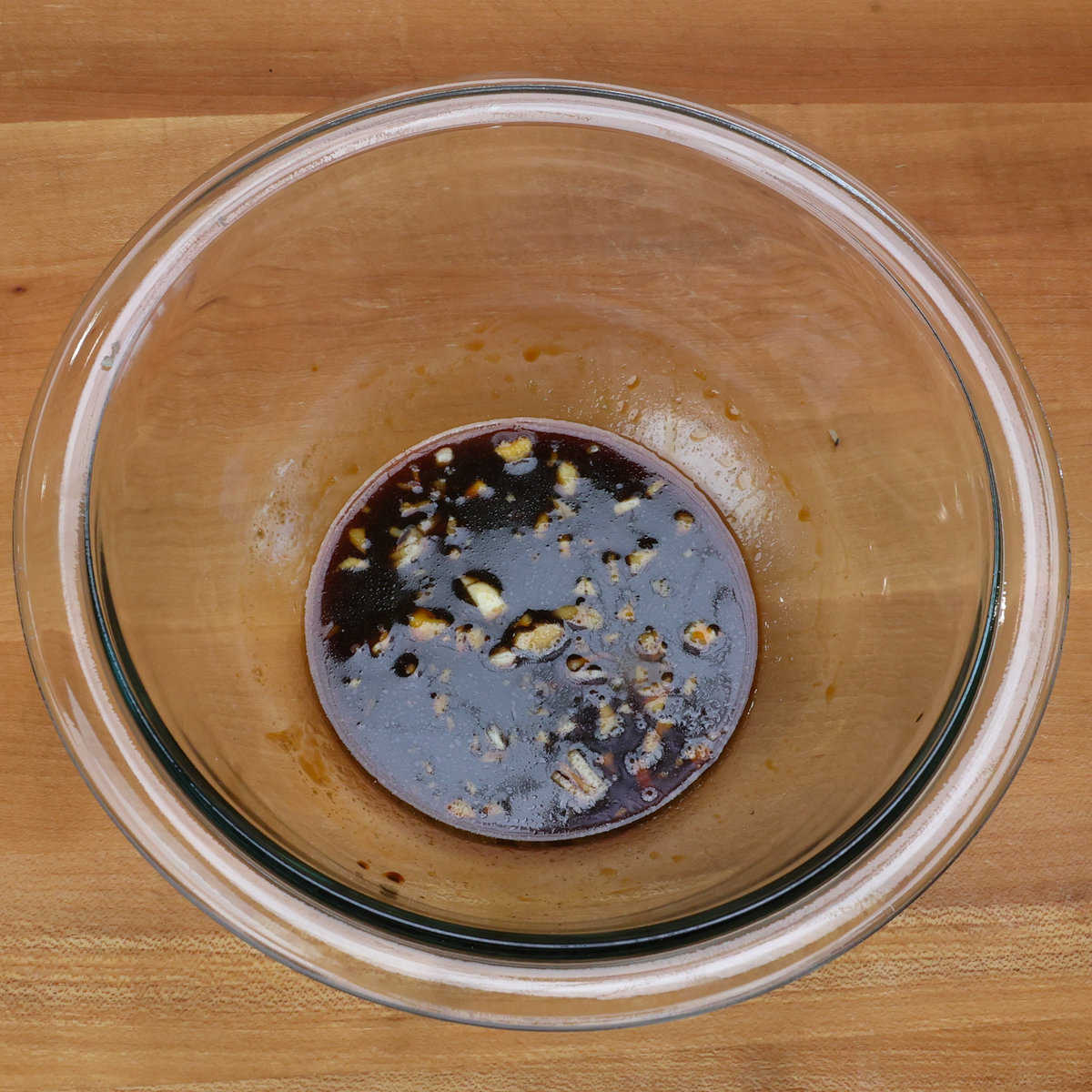
- Make the Sauce: Whisk all sauce ingredients in a small bowl or shake them together in a jar. Set aside.
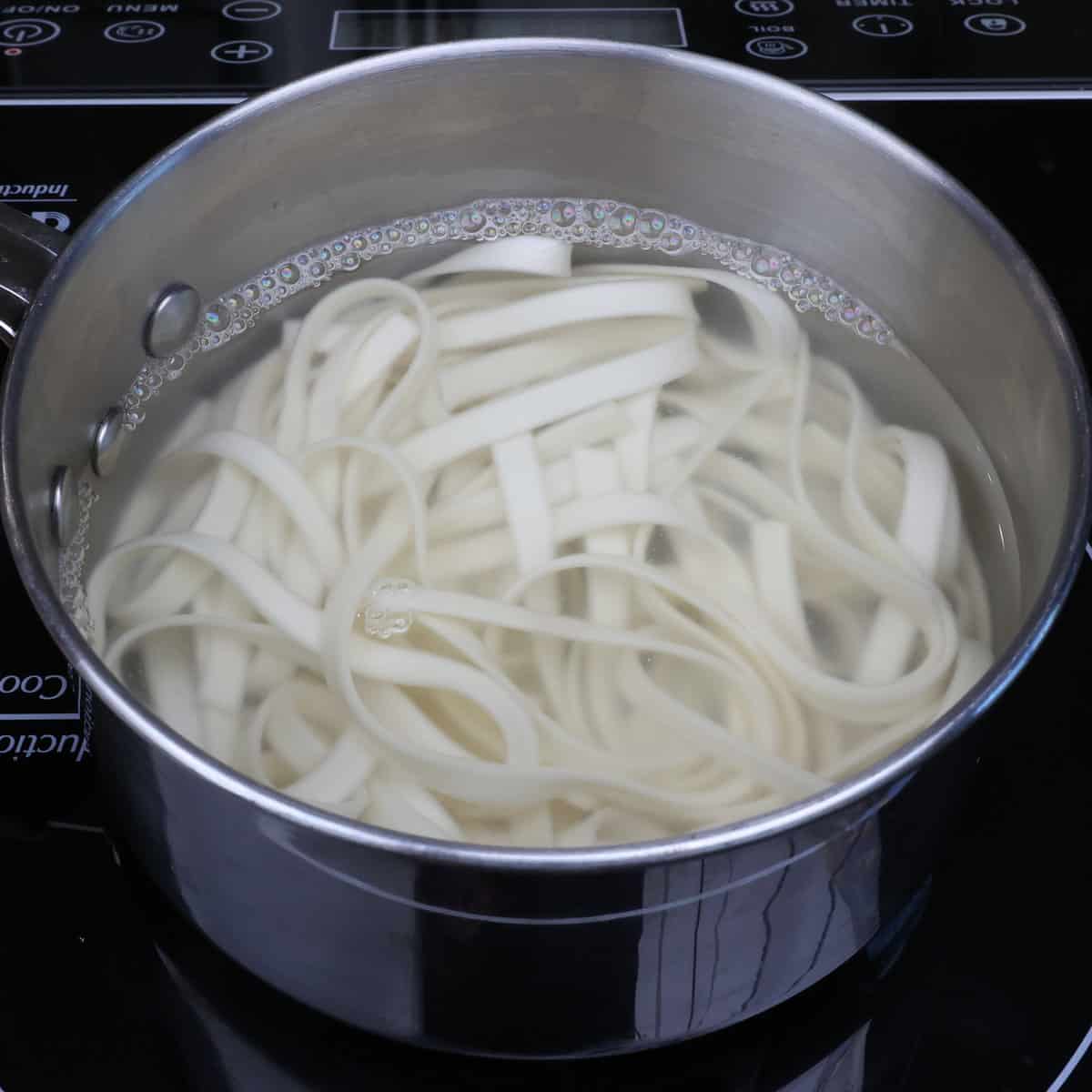
- Cook the Noodles: Cook the noodles according to the package instructions. Drain and rinse under cold water to stop the cooking and prevent sticking. Set aside.
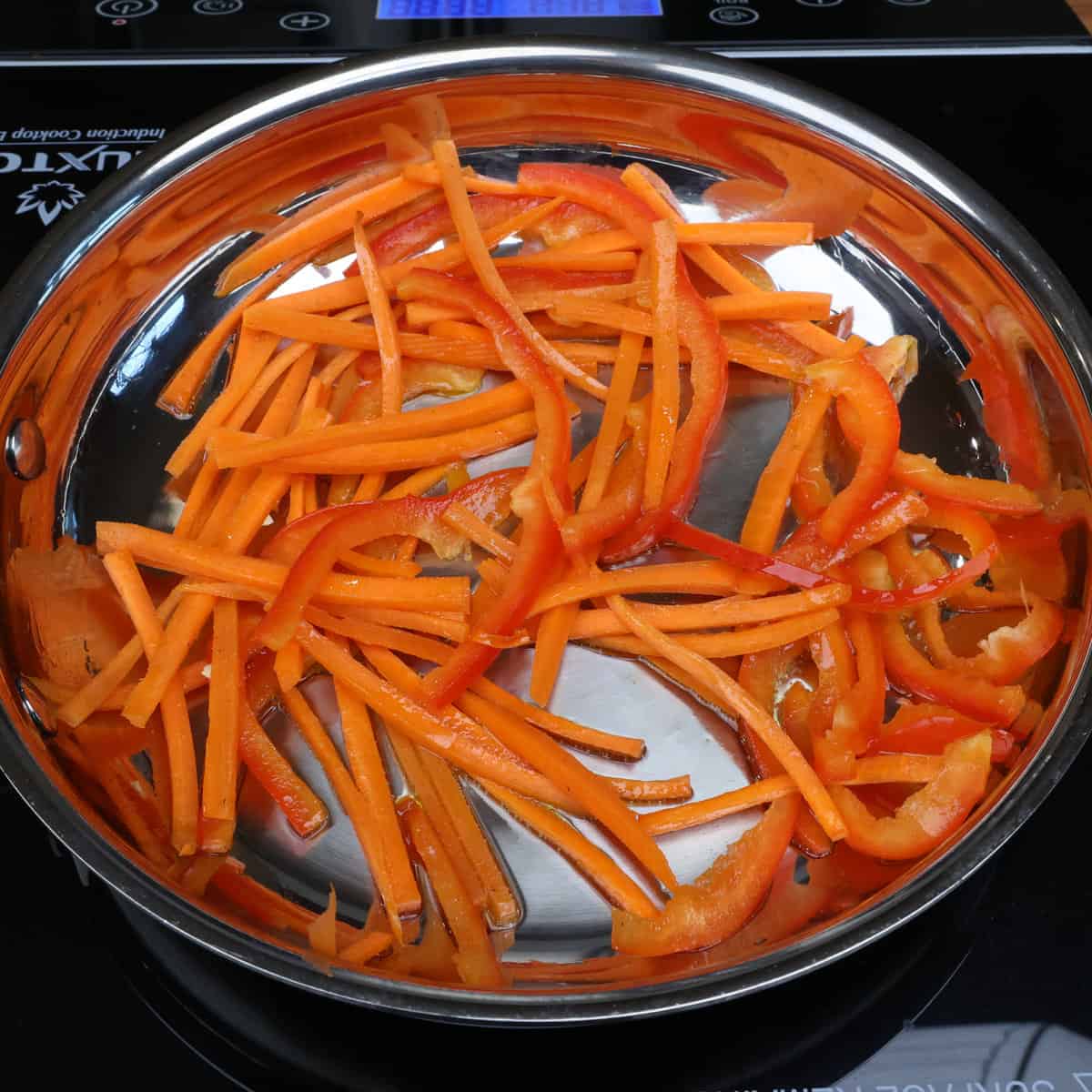
- Cook the Vegetables: In a 10-inch skillet, heat oil over medium heat. Add sliced bell pepper and carrot. Cook, stirring often, until tender-crisp, about 4 minutes.
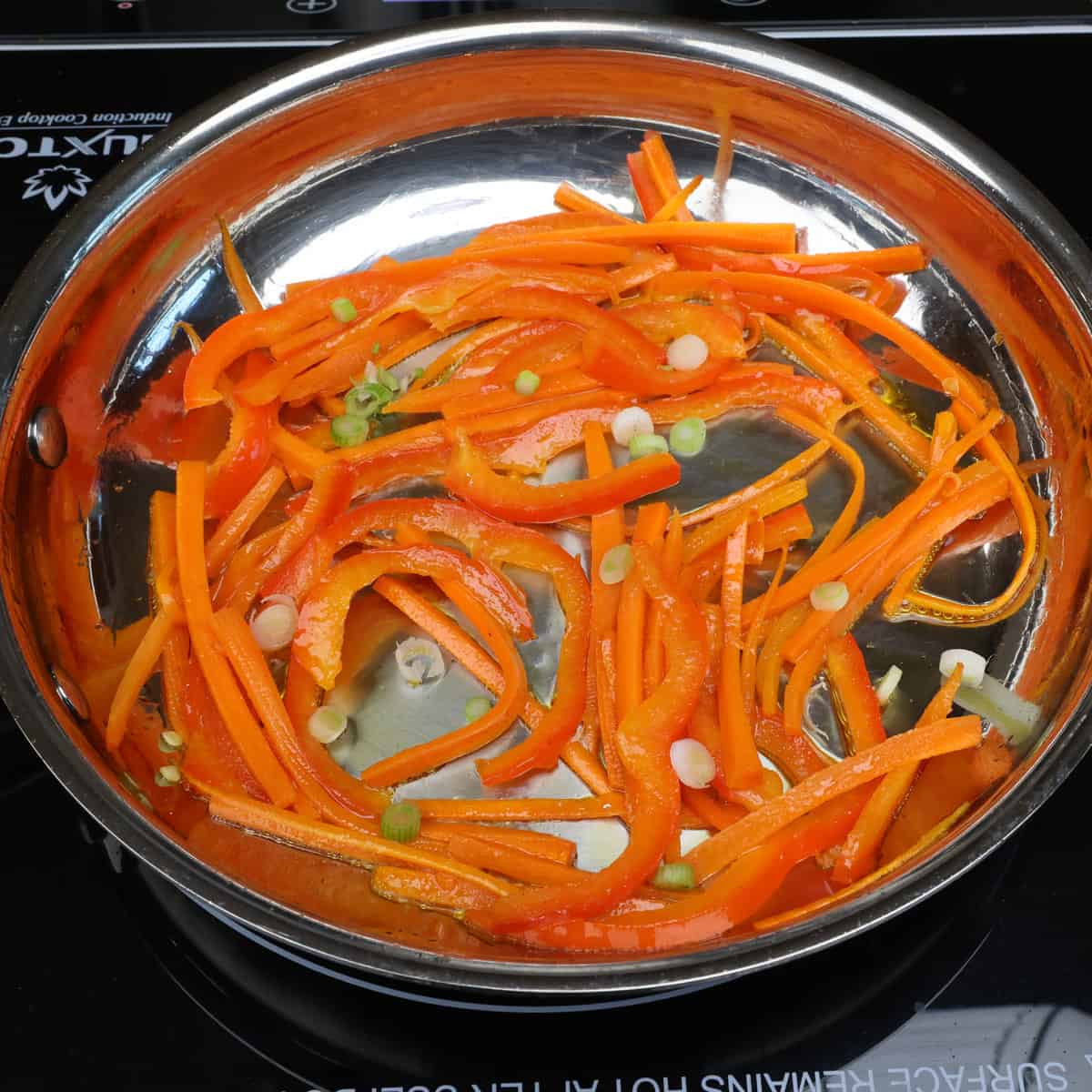
- Add Green Onions: Stir in the white parts of the green onions and cook for 30 seconds.

- Add Noodles and Sauce: Push the vegetables to the sides of the skillet. Add the cooked noodles and pour in half the sauce. Toss everything together until the noodles are heated through and coated. Add more sauce to taste.
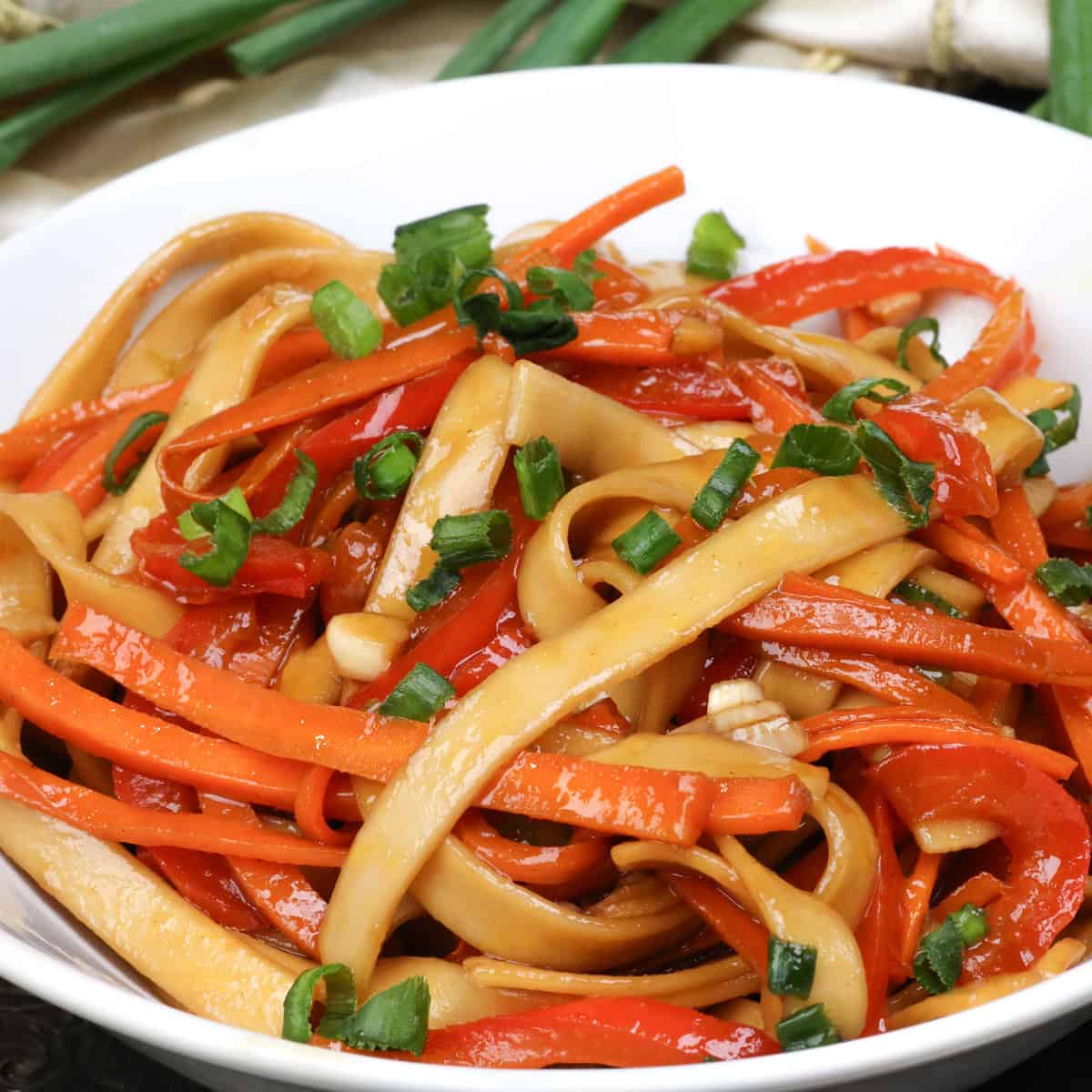
- Serve: Transfer to a bowl and top with the remaining green onions. Serve warm.
Expert Tips
- Review the Recipe First: Read through the full post and gather your ingredients before starting. This dish comes together quickly, so prep is key.
- Noodles: Cook noodles just until al dente—they’ll soften more when tossed with the sauce.
- Sauce: If the sauce is too thick, add a splash of water. If it’s too thin, let it simmer a bit to thicken.
- Vegetables: Cook until crisp-tender to keep their texture and freshness.
Serving Suggestions
When considering what to pair with your Lo Mein, these side dishes offer a perfect balance:
- Cucumber Salad: Light and crisp, cucumber salad adds a refreshing contrast to the savory noodles.
- Sautéed Green Beans: A simple, flavorful side that adds color, texture, and nutrition.
- Toppings: Add extra flavor and crunch with green onions, sesame seeds, chopped peanuts, bean sprouts, or crispy wonton strips.
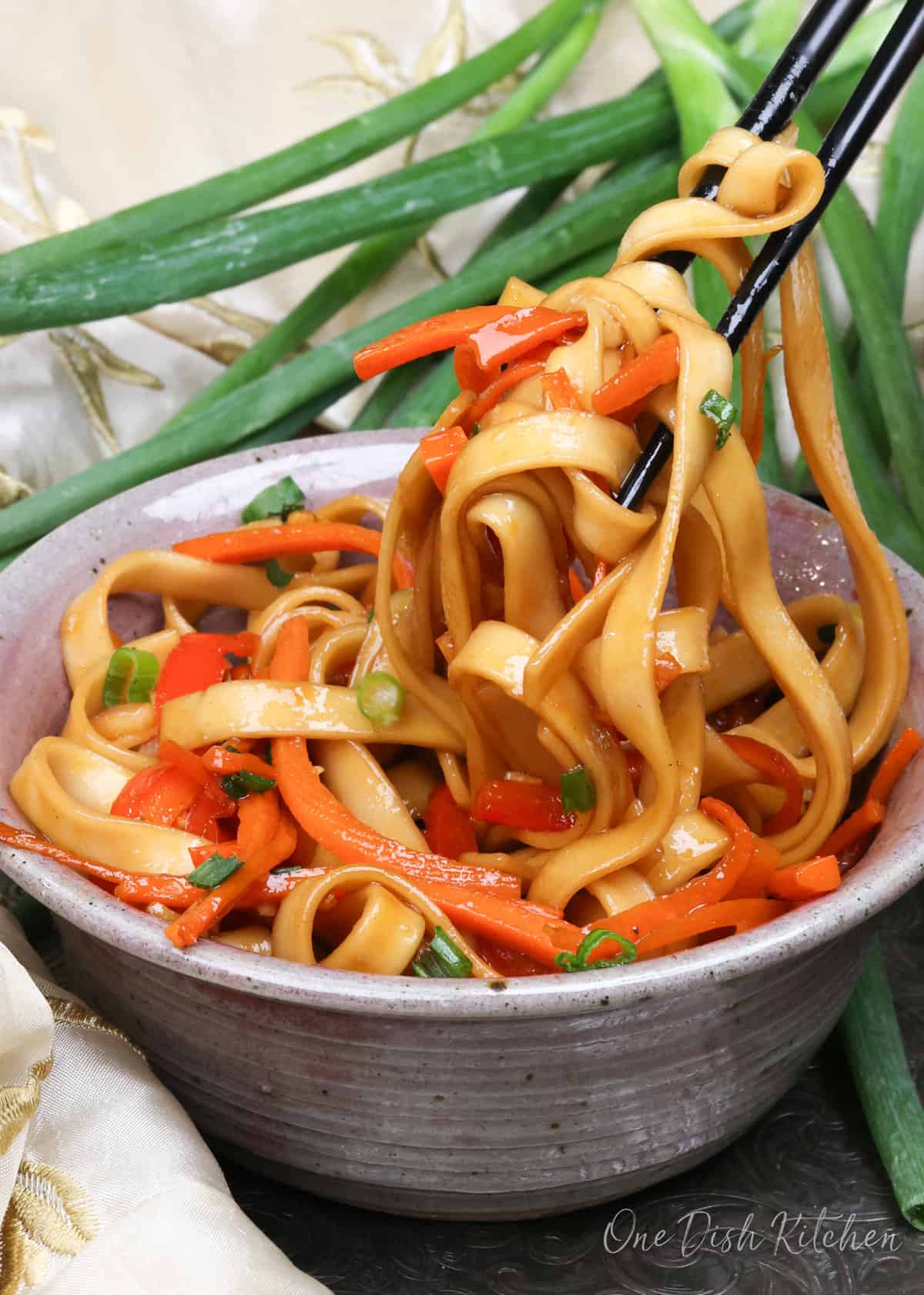
Frequently Asked Questions
Lo mein is best served fresh, but you can prep the sauce and chop the vegetables ahead to save time.
Store in an airtight container in the refrigerator for up to 2 days. Reheat gently in a skillet or microwave.
Yes, just be sure to thaw and drain them before adding to the skillet to avoid excess moisture.
Yes, this recipe doubles easily. Just be sure to use a larger skillet or pan to avoid overcrowding.
Ways To Use Leftover Ingredients
If you have any ingredients leftover from this recipe, check out our Leftover Ingredients Recipe Finder or you might like to consider using them in any of these single serving and small batch recipes:
If you’ve made this quick and easy Lo Mein recipe, I’d love to hear how it turned out for you. Please rate the recipe and share your thoughts in the comments below.
Snapped a photo? Tag us on Instagram; we’d be thrilled to see your creation!
Lo Mein For One

Watch How To Make This
Equipment
Ingredients
For the Sauce
- ½ tablespoon dark soy sauce
- 1 teaspoon low sodium soy sauce
- 1 tablespoon oyster sauce
- ¼ teaspoon sesame oil
- ¼ teaspoon granulated sugar
- ⅛ teaspoon ground ginger
- 1 clove garlic -finely minced
For the Lo Mein
- 2 ounces uncooked lo mein noodles or other noodles (1 cup cooked noodles) see notes below.
- ½ tablespoon avocado oil or use vegetable or canola oil
- ½ medium red bell pepper -thinly sliced
- 1 small carrot -thinly sliced
- 1 green onion -chopped. Separate the white from the green part – both will be used
Instructions
- Make the Sauce: In a small bowl, whisk together all sauce ingredients or shake them in a jar. Set aside.
- Cook the Noodles: Cook noodles according to package directions. Drain and rinse under cold water. Set aside.
- Cook the Vegetables: In a medium (10-inch) skillet, heat oil over medium heat. Add sliced bell pepper and carrot. Cook, stirring frequently, until tender-crisp, about 4 minutes.
- Add Green Onions: Stir in the white parts of the green onions and cook for 30 seconds.
- Add Noodles and Sauce: Push the vegetables to the sides of the skillet. Add the cooked noodles and pour in half the sauce. Toss everything together until the noodles are heated through and well coated. Add more sauce if needed.
- Serve: Transfer to a bowl and top with the remaining green onions. Serve warm.
Notes
- Review the Recipe First: Read through the full post and gather your ingredients before starting. This dish comes together quickly, so prep is key.
- Noodles: Cook noodles just until al dente—they’ll soften more when tossed with the sauce.
- Sauce: If the sauce is too thick, add a splash of water. If it’s too thin, let it simmer a bit to thicken.
- Vegetables: Cook until crisp-tender to keep their texture and freshness.
- Noodles: We use wide lo mein noodles for their hearty texture and ability to hold sauce well. You can substitute with thin lo mein noodles, spaghetti, linguine, or fettuccine. Two ounces of dried noodles equals about 1 cup cooked.
- Dark Soy Sauce: Adds deep color and rich, slightly sweet flavor. It’s thicker and less salty than light soy sauce and helps balance the dish. If unavailable, use extra low-sodium soy sauce, but the result will be saltier and less complex.
- Protein: Add cooked chicken, beef, tofu, or shrimp to make it more filling.
Nutrition
The information shown is an estimate provided by an online nutrition calculator. It should not be considered a substitute for a professional nutritionist’s advice.
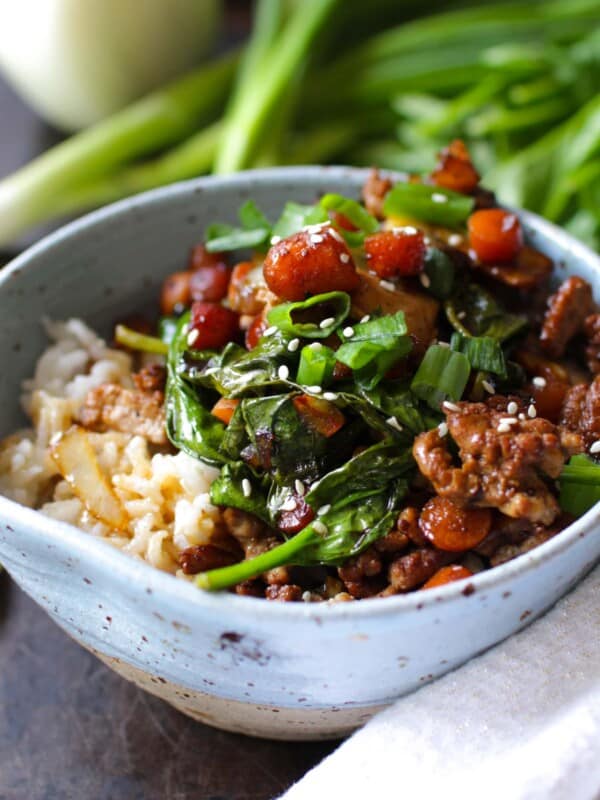
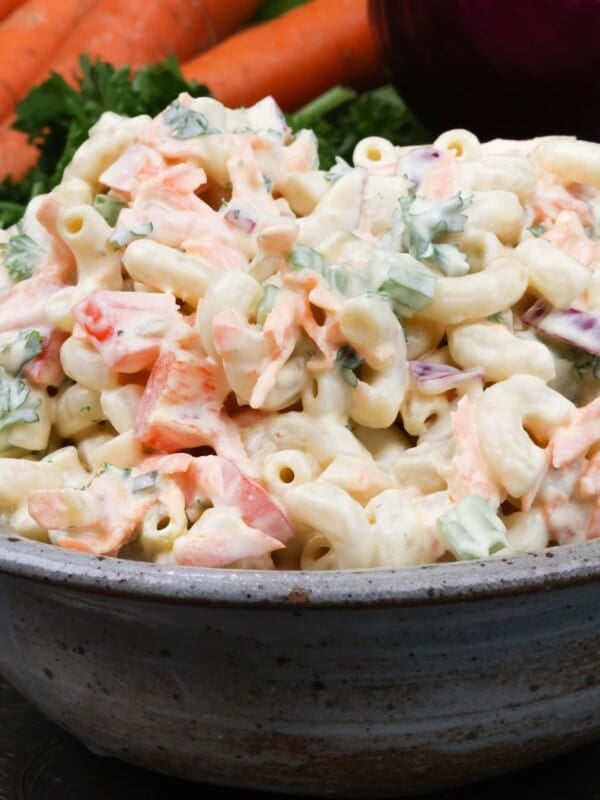




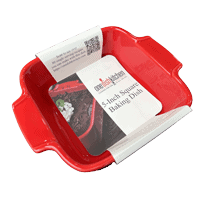








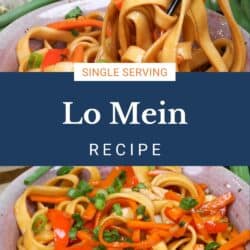
This recipe is easy and delish! My daughter & son in love really enjoy it!
Love this recipe – actually have yet to find one that I have not enjoyed!! Your recipes have been a
a life saver. After 60 years of cooking I found myself lost after my husband recently passed- was not interested in eating or cooking. But your recipes have revived my interest and I look forward to preparing food again. (could have adjusted my own recipes (and I do, occasionally) but following yours is easier). Thank You!
What happened to the box that prevents the screen from going dark? It is no longer there and that makes following the recipe somewhat difficult .
Thank you so much for your kind words—I’m truly touched to hear that the recipes have brought you a bit of comfort and helped you feel inspired to cook again. That means the world to me.
As for the screen dimming issue, we recently removed the “Keep Screen On” button, but the feature should still be working behind the scenes. Your screen shouldn’t go dark while viewing the recipe. If it is, let me know and we’ll look into it further. I want to make sure everything is working as it should for you.
Love, love lo mein! The vegetables I use are green beans, mushrooms & edamame. I’ll have to try red pepper & carrot next.
One of the things I love about Lo Mein is that it is so easy to adapt to use the ingredients you have on hand.
Hello, I recently came acrosss your site and have been very pleased with the things I have made.
I had pretty much given up cooking since I was used to cooking for a crowd.
Can you suggest a substitution for the oyster sauce? I am allergic and even the small amount of oyster derivitives in the sauce cause me breathing issues.
Hoisin sauce would be a great alternative.
There is also a vegetarian oyster sauce available that you can purchase as my husband can’t have fish.
Great recipe,
Thank you.